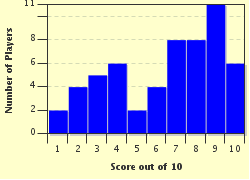Quiz Answer Key and Fun Facts
1. You and your friend, Jenny, enter your Korean language classroom. You notice that your new instructor has redecorated and brought in a strange new designer piece from the fashionistas in Seoul. You step up next to the item, point to it, and ask "What is THIS?"
What was Jenny's response in Korean? (You can find both question and answer in the image to the left, and you can click the image to enlarge it.)
2. By now the class is filling in and the instructor is a Korean female, the same age as you! That's excellent; now we don't have to be too formal. The instructor asks Jenny a question which you don't quite understand. Jenny responds in Korean, "No, I am American."
What question did the instructor ask Jenny?
3. The instructor now looks suspiciously as a guy walks into the classroom holding a paper, looking lost. She asks him a question. What was his response?
4. During class, you are studying vocabulary about family. You pull up a photograph on your smartphone of your father wearing some funny glasses with a mustache attached. Your instructor asks you a question about that person. What would be a simple way to answer the question?
5. Jenny gets a little antsy after all this studying. She asks the instructor if there is a test. According to the instructor, is there a test?
6. The instructor is busy with another student. You see her bag tip over and something rush out of it quickly! The thing has hidden in the corner away from everyone. Jenny shouts something and you hear the instructor respond, "It's a cat!" What did Jenny ask?
7. The instructor's cat is now running around the room, trying to escape the onslaught of students. You spot the cat and want to impress the teacher by indicating its location in Korean. What have you said?
8. The instructor quickly rushes over and grabs her cat. She disappears outside for a moment and comes back. Jenny asks, "Where is the cat?". What does the instructor say?
9. Jenny and you are trying to learn your directions (left and right), but it isn't going so well. You have an apple and a banana. You want to say, "The apple is to the right of the banana." Is your sentence correct?
10. The instructor is really happy with the class' progress. She wants to reward everyone. How does she announce this?
Source: Author
trident
This quiz was reviewed by FunTrivia editor
stedman before going online.
Any errors found in FunTrivia content are routinely corrected through our feedback system.

